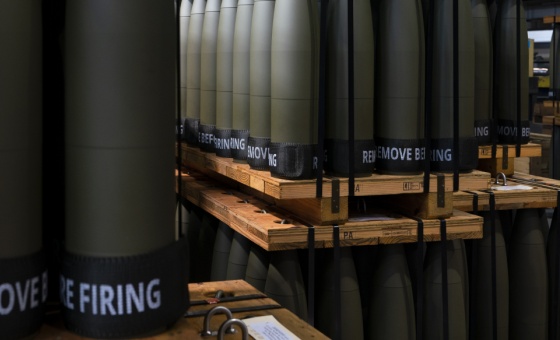This is the last article you can read this month
You can read more article this month
You can read more articles this month
Sorry your limit is up for this month
Reset on:
Please help support the Morning Star by subscribing here
Tate Modern's comprehensive exhibition shows that Richard Hamilton (1922-2011) achieved far more than pioneering British pop art, for which he is best known.
The son of a London car showroom driver, he studied art at evening classes from the age of 12. Too young to be conscripted, in WWII he was directed to an engineering drawing apprenticeship and worked as a draughtsman until 1946.
Resuming his art studies, he was expelled from the traditionalist Royal Academy schools for voicing his admiration of Cezanne. After his national service, in 1948 he found more congenial teaching at the Slade School of Art where there was a Cezannesque emphasis on painting from the motif to establish acutely judged relationships of form and space.
This disciplined visual awareness, combined with his expertise in engineereng draughtsmanship, informed Hamilton's future works.
Fascinated by design, science and technology and the impact of the mass media on our understanding of the world, Hamilton rebelled against the rarefied introspection which dominated contemporary art.
In the postwar period visual communication was transformed by sophisticated marketing and advertising techniques, innovations in colour photography and film, television and industrial printing technologies.
While most artists viewed these media as vulgar threats to traditional high art mediums, Hamilton made their messages and processes the subject of his art.
For a 1956 exhibition he worked on The Fun House, a sensory environment complete with optical illusions, a juke box playing and blown-up images of Hollywood stars, science fiction and advertising.
For the catalogue Hamilton produced the now iconic Just What Is It That Makes Today's Homes So Different, So Appealing? Featuring the latest shiny consumer goods - hairdryer, vacuum cleaner, television and tape recorder - he populated his tiny collage with male and female stereotypes.
This led to paintings which interrogated and satirised but also celebrated the seductive dishonesty of mass media's verbal and visual languages. Combining these with those of high art painting and drawing Hamilton, bridged the gap between art and mass culture.
He juxtaposed diverse collage materials, photography, airbrushing, technical drawing, representational painting and abstraction's swirls and eddies. Works such as $he - whose dollar sign S signals advertising's commercialisation of women's bodies - show Hamilton's impressive technical mastery in combining a wide variety of techniques in the pre-digital age.
The handcuffs which link Mick Jagger to Hamilton's art dealer in the famous Swingeing London painting consist of three-dimensional aluminium and metalised acetate attached to canvas. Its title plays on the judge's recommendation of a "swingeing sentence" for the drug offence by glamorous protagonists of what the media called swinging London.
Such word games typify Hamilton's preoccupation with complex, multilayered references and meanings. His major early influences were James Joyce and Marcel Duchamp and Hamilton introduced the latter to a baffled British audience in a mid-1960s exhibition.
Yet unlike Duchamp, Hamilton engaged periodically with social and political issues. In 1963-4 he combined photographs of Hugh Gaitskell with ones of "a famous monster in filmland" to vilify the Labour leader's betrayal of the party's majority support for unilateral nuclear disarmament.
The 1984 installation Treatment Room evokes the bleakness of an impersonal hospital room. Instead of clinical equipment, a television set overhangs a treatment table and broadcasts an unctuously hypocritical Margaret Thatcher repeating a speech. Torture replaces diagnosis or cure. Expressing the anger of his generation which had built the welfare state, Hamilton asked: "Is the vision of Mrs Thatcher patronising a victim of the health service part of the future we once thought so bright?"
Later works addressed the troubles in Northern Ireland, Mordechai Vanunu's revelation of Israel's nuclear programme to the press during his abduction from Rome, Tony Blair's vile posturing during the invasion of Iraq and Israel's illegal fragmentation and invasion of Palestine.
The unifying theme of Hamilton's work is its appeal to the mind. His work's non-emotive, impersonal means of expression with their multilayered references to art, politics and mass culture can seem over-cerebral. The expectation of art to elicit immediate visceral responses stems from the dominant western aesthetic criteria which privilege sensory and emotional appeal over meaning.
The sensuous painterliness, elegant line and sensitive drawing which bubble up in many works suggest that Hamilton was attracted by both divergent aesthetic currents.
Yet overall he resolutely looked outwards at the contemporary world - quizzically, satirically or accusatorially - but always from a progressive point of view. Rooted in a rejection of the self-indulgent introspection of 1950s abstraction, Hamilton's work belies a passionate and well informed commitment to jogging consciences and waking up minds.
The Richard Hamilton retrospective runs at Tate Modern, Bankside, London SE1 until May 26, box office: (020) 7887-8888. Two of Hamilton's pioneering 1950s installations are on view at the ICA in London until April 6.








